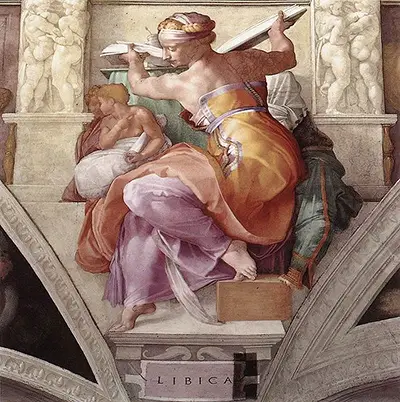An artist who was popular during his lifetime, Michelangelo continues to awe future generations of artists, historians, and the general public till date. His nickname Il Divino or "the divine one" is indeed apt.
Born in 1475, Michelangelo was from a well-to-do aristocratic family of bankers.
He was raised in Florence, which was the art centre of Europe at the time. This gave the budding artist plenty of opportunities to try out his talents. He was apprenticed to Domenico Ghirlandaio, who even paid him. He also began sculpting at this time.
It was in 1505 that Michelangelo was invited back to Rome by Pope Julius II, whose tomb he was commissioned to build. The work lasted for 40 years but was never completed. At this time, he was also commissioned to paint the ceiling of the Sistine Chapel, the task for which the artist is most famous.
The Libyan Sibyl is a motif painted on the Sistine Chapel, one of the many that Michelangelo worked on for four years. These paintings all had religious motifs and depicted the doctrine of the Catholic Church.
The Libyan Sibyl is a depiction of Phemonoe, the priestess of the Oracle of Zeus-Ammon. She is known for predicting that the day would come when the hidden would be revealed. She is known as the Libyan Sibyl because the Oracle she presided over was located in the Libyan desert at Siwa Oasis.
She is believed to be also the first woman to chant oracles. Even Alexander the Great was confirmed as a divine being and a legitimate Pharaoh of Egypt by Phemonoe.
The Libyan Sibyl on the ceiling of the Sistine Chapel is depicted with regal and Hellenic features. The muscular sibyl is divested of her cloak and is only dressed in her white and orange robe. She is holding a huge book, from which she probably reads the oracles.
She might be putting the book back on the table or just removing it. The sibyl herself is balanced precariously on the precipice, with her toe splayed apart. There are two children seated in front of her, busy in conversation. The colour scheme is detailed and delicately shaded, the artist's eye for detail has not let him down on this depiction.
The figure is considered to be one of the finest and most graceful forms depicted by Michelangelo on the Sistine Chapel ceiling. The Libyan Sibyl was the last seer to be painted on the north side.
The figure is three times life size, and is quite awe inspiring. The painting was restored as part of a series of restorations that took place within the Sistine Chapel between 1980 and 1994.
The restoration proved to be very controversial and many art historians have criticised it as being unaware of the original intentions of the artist. Indeed, The Libyan Sibyl now has fewer shadows and shades than it originally had.
However, this magnificent masterpiece of Michelangelo continues to amaze tourists and artists alike, and continues to be a wonderful depiction of Renaissance art.


